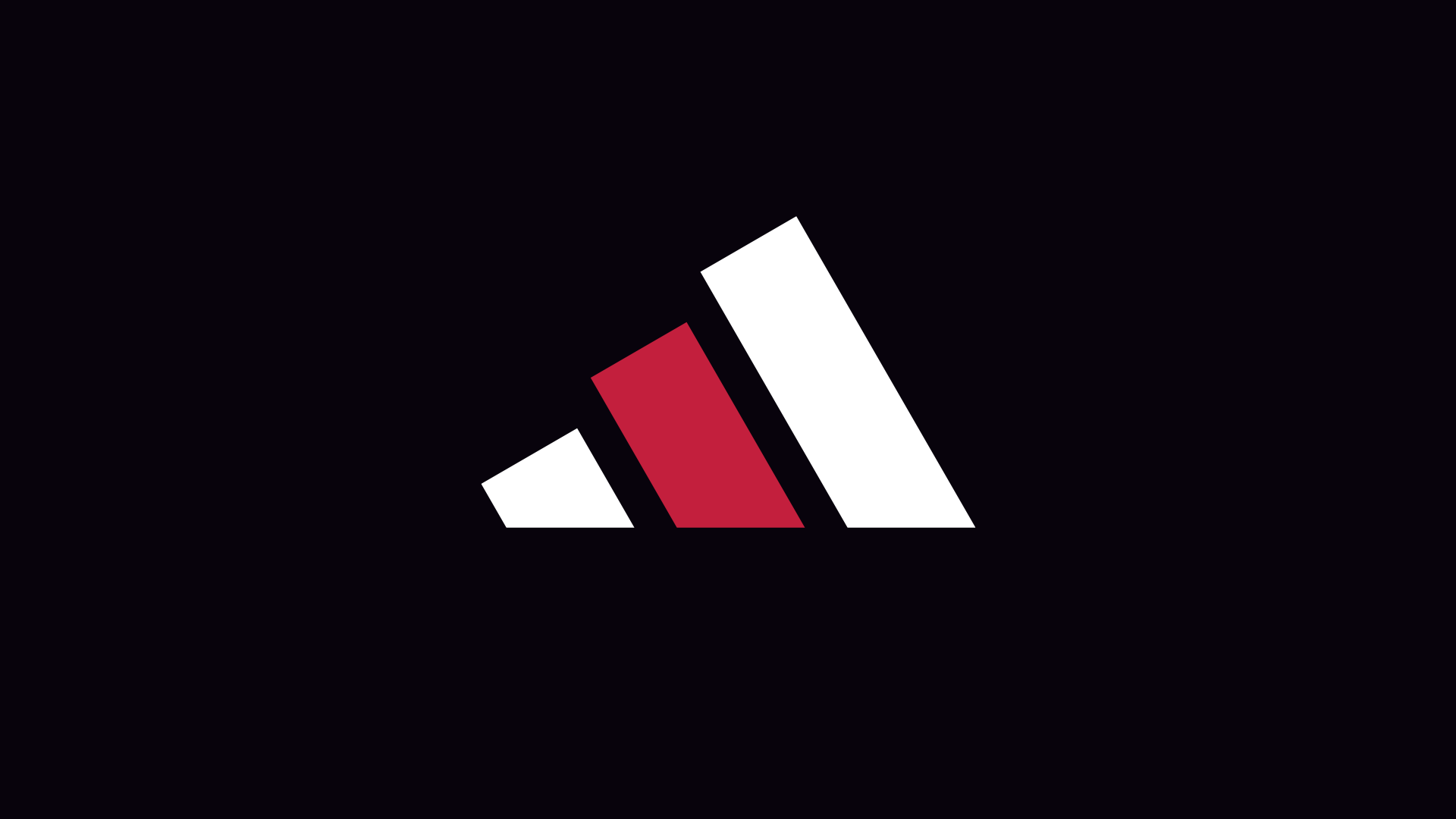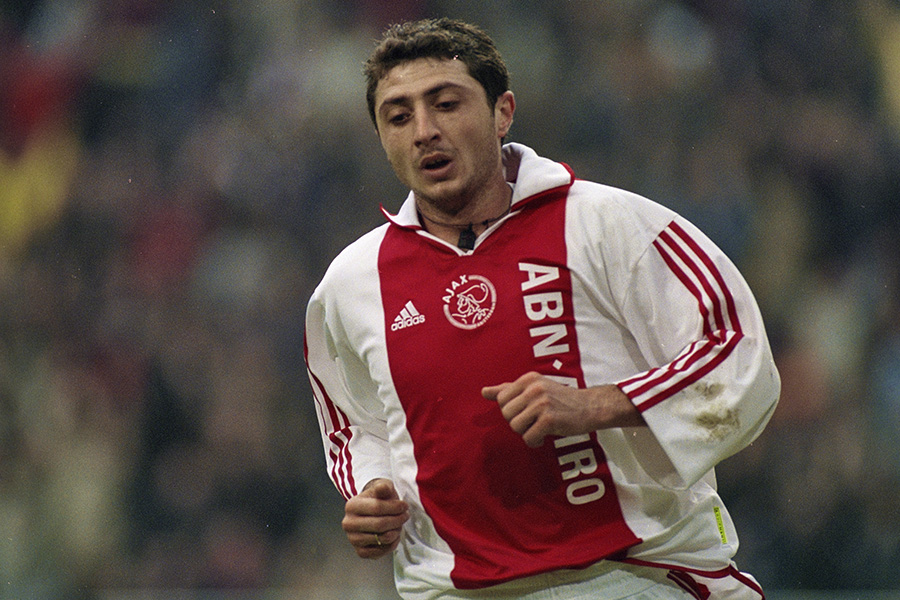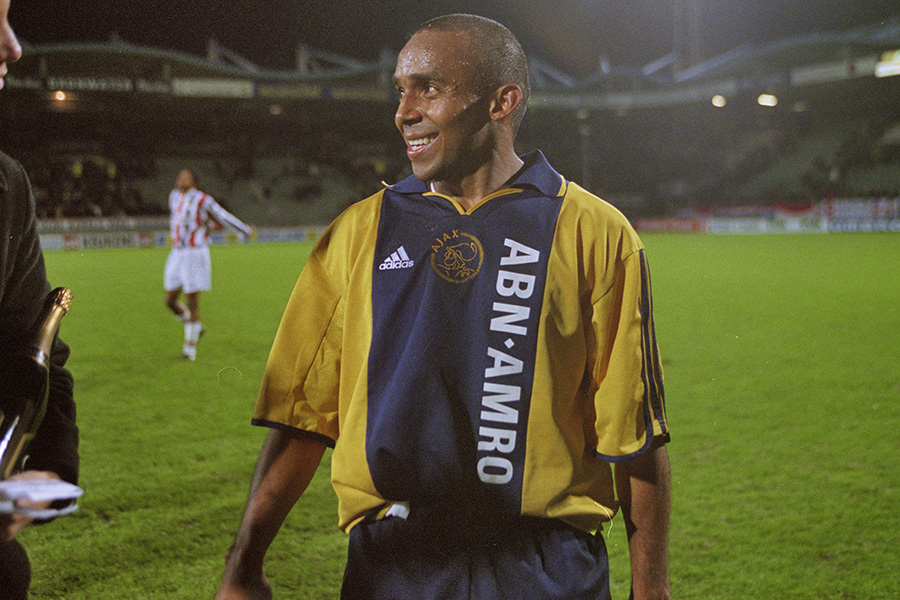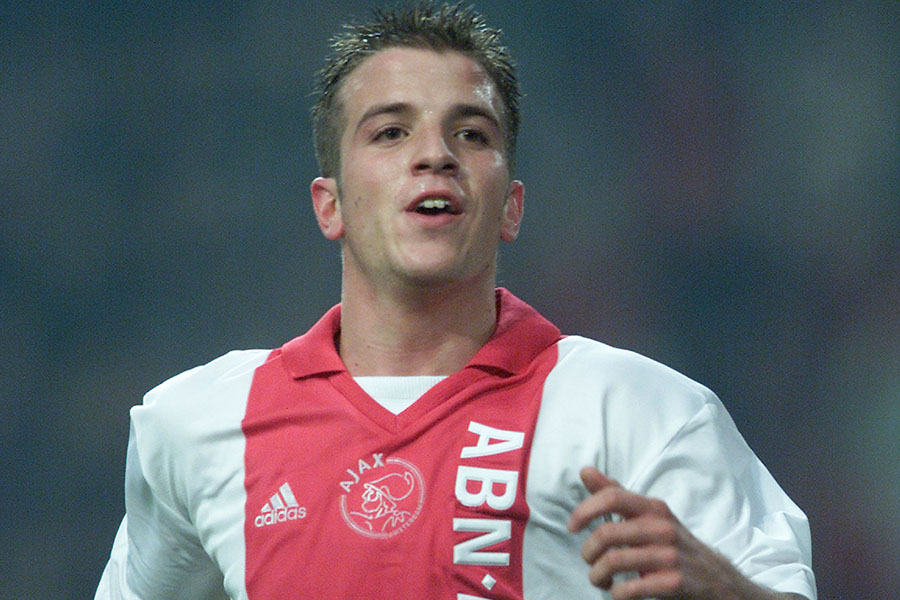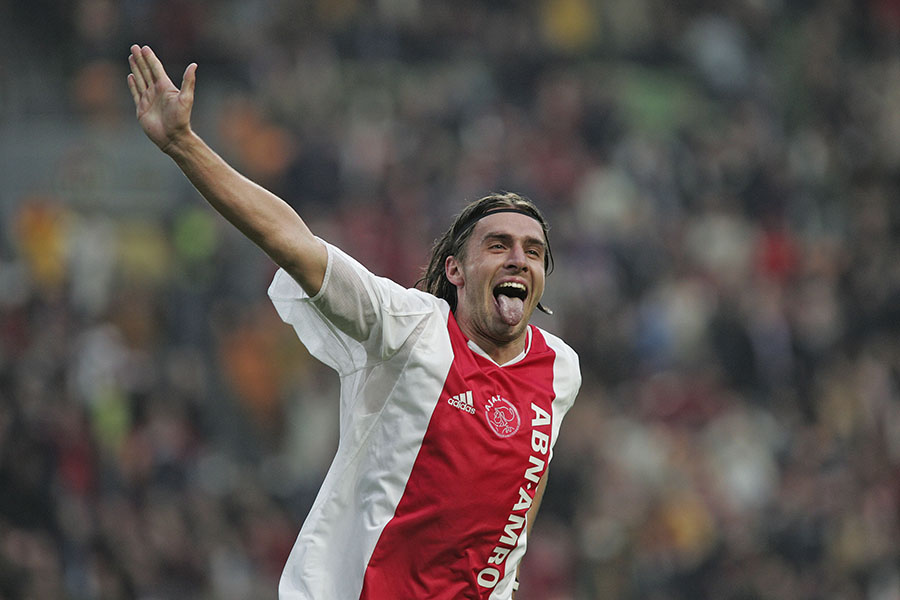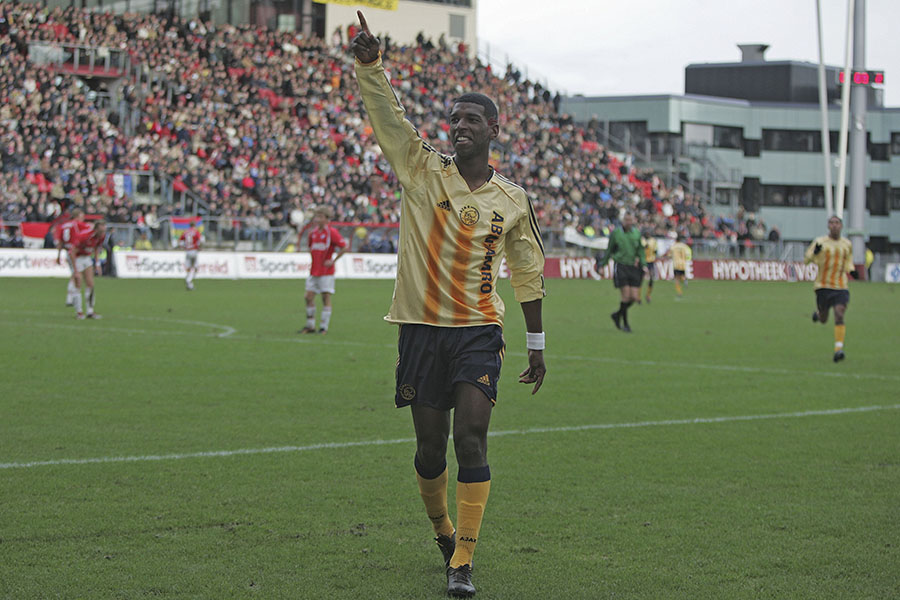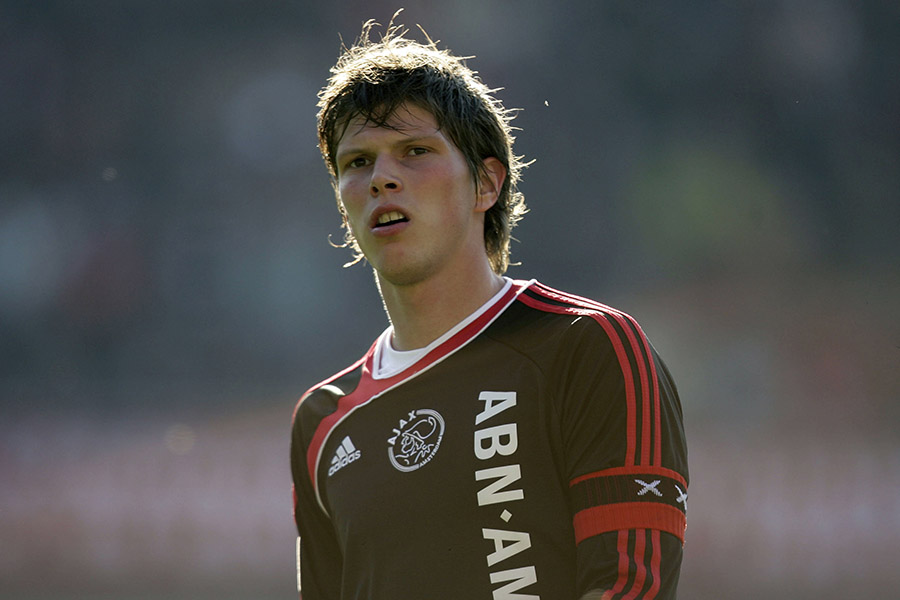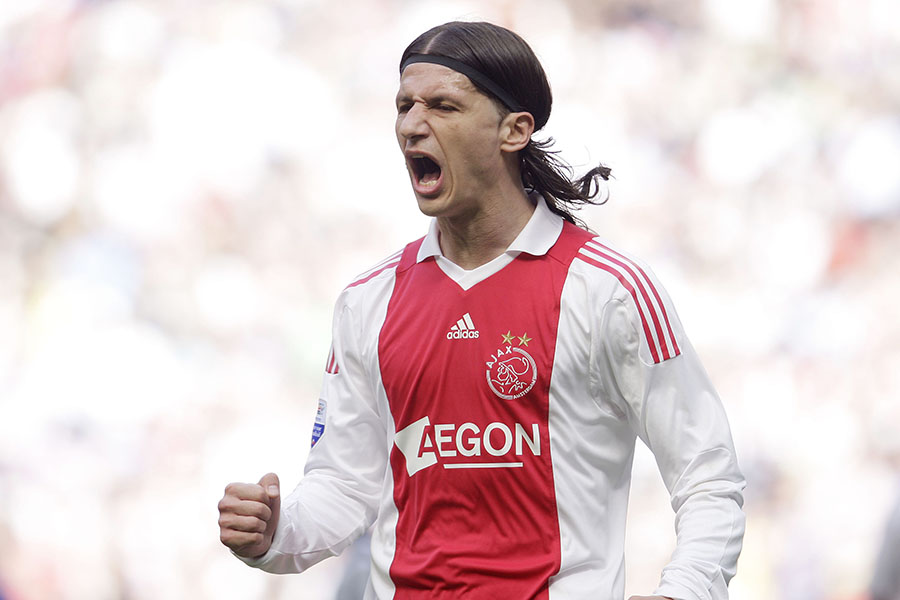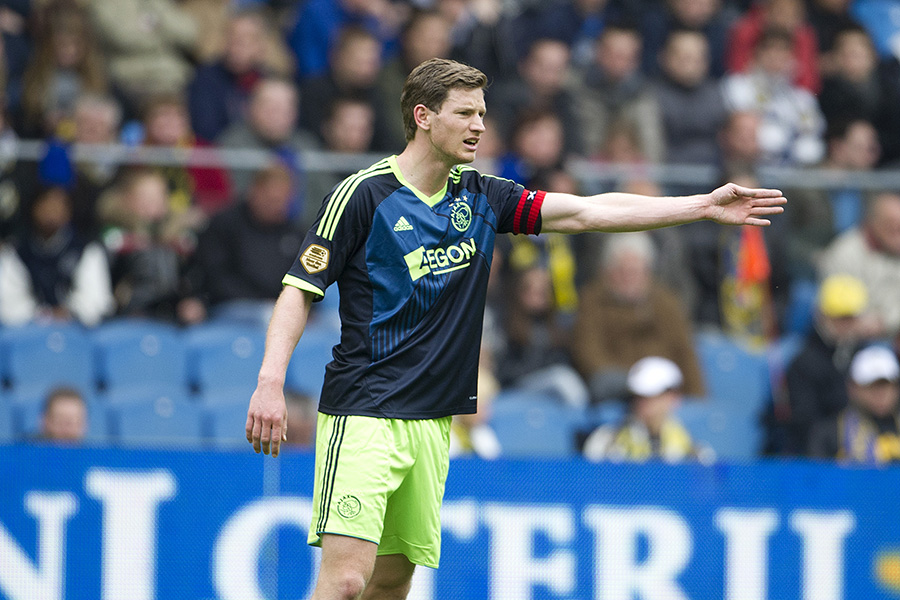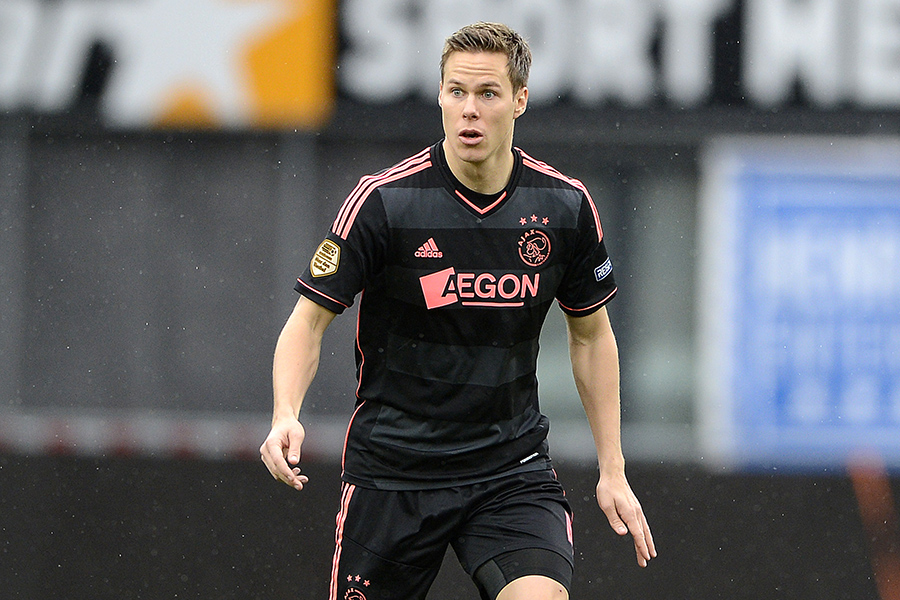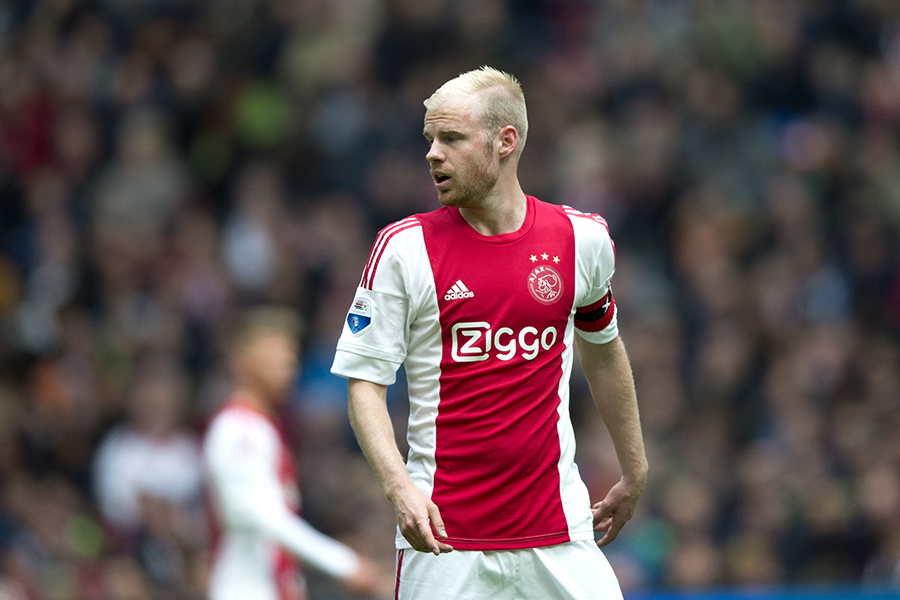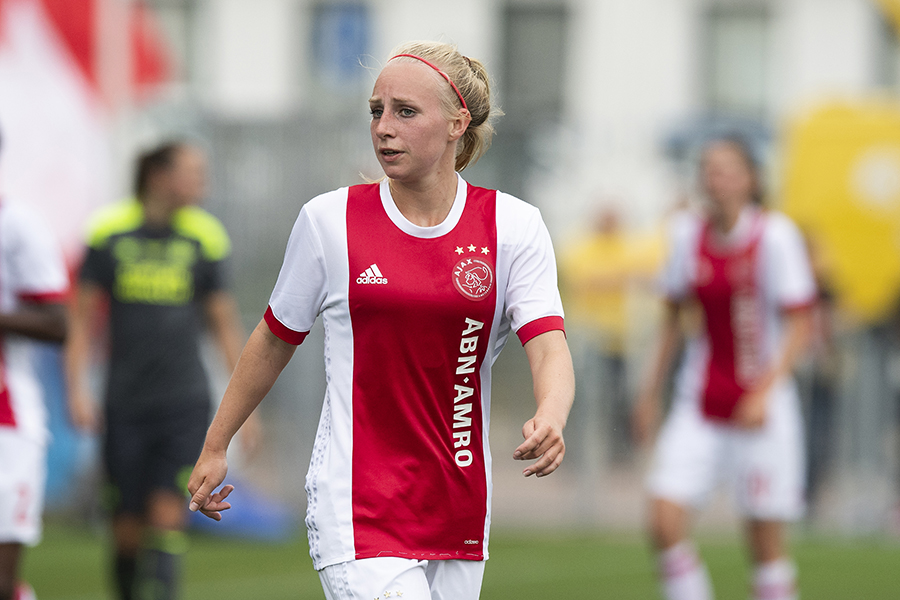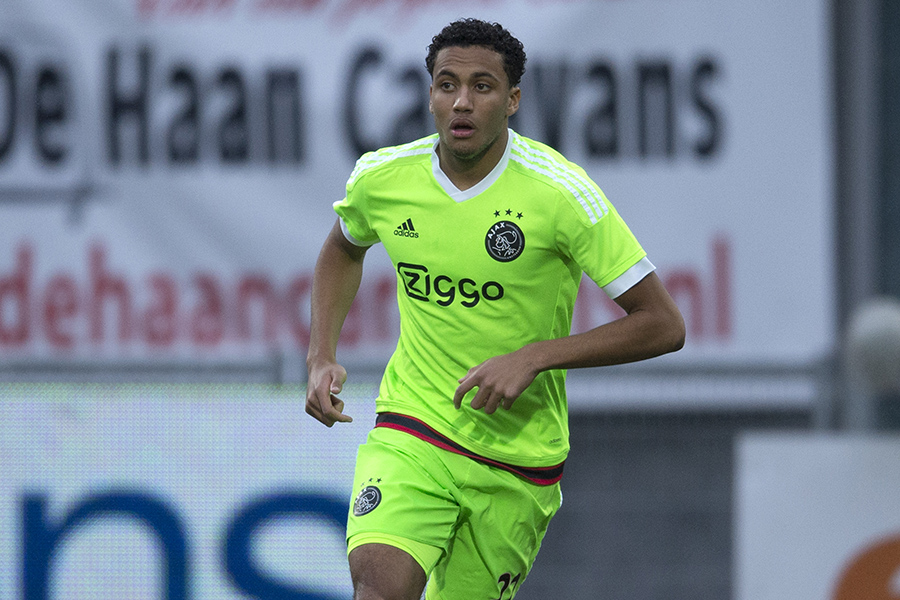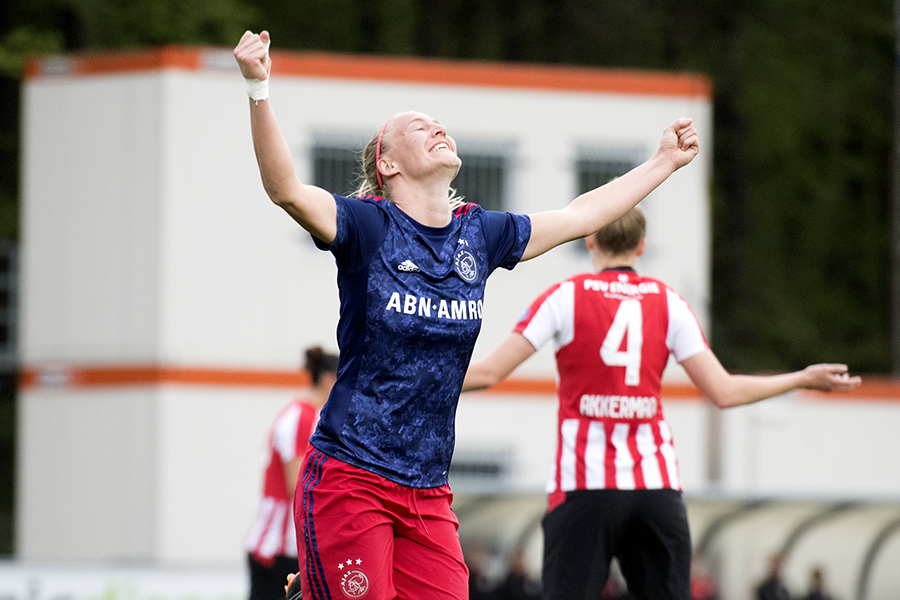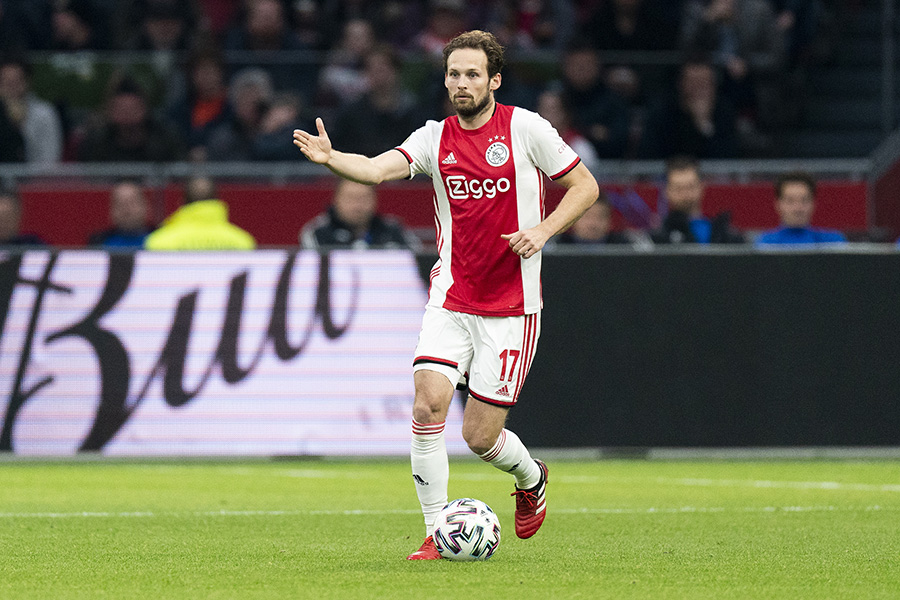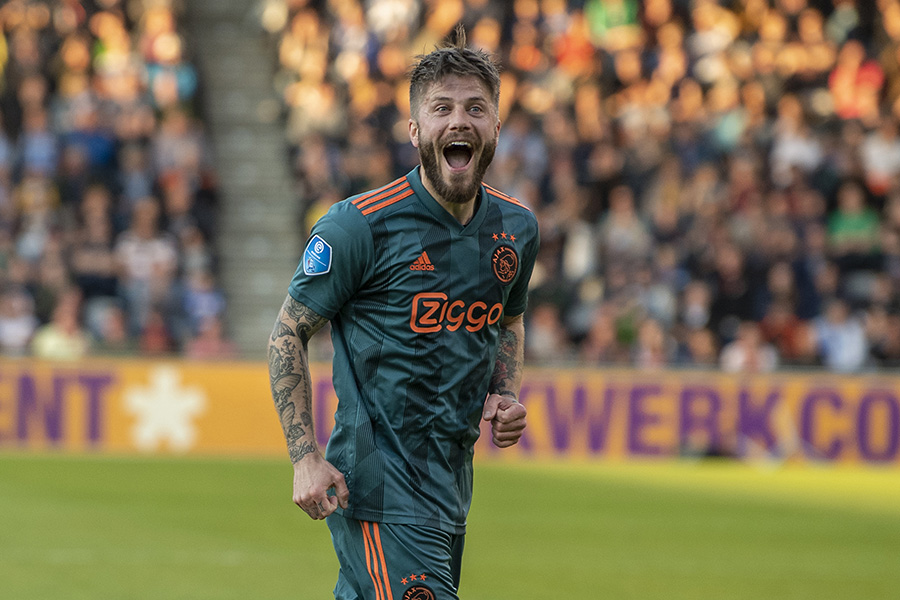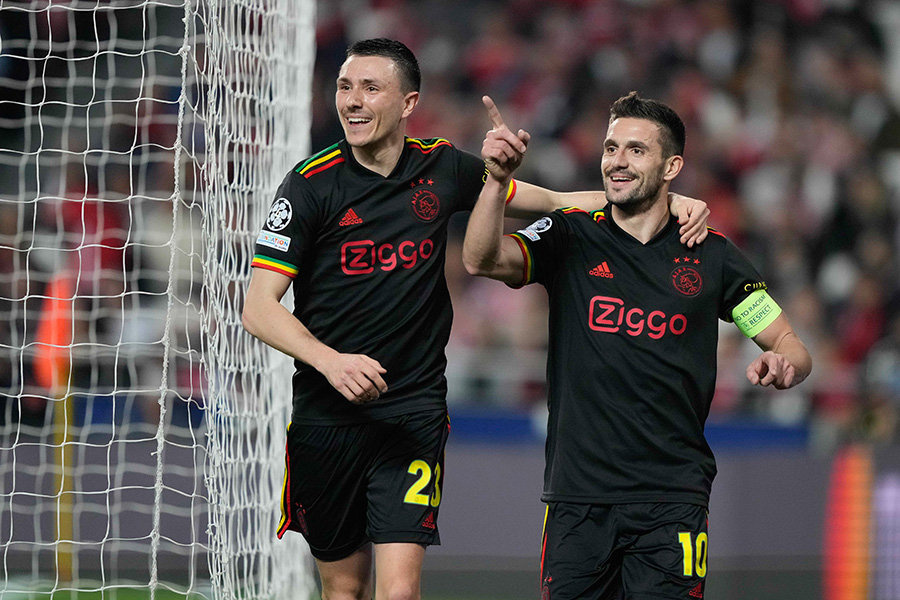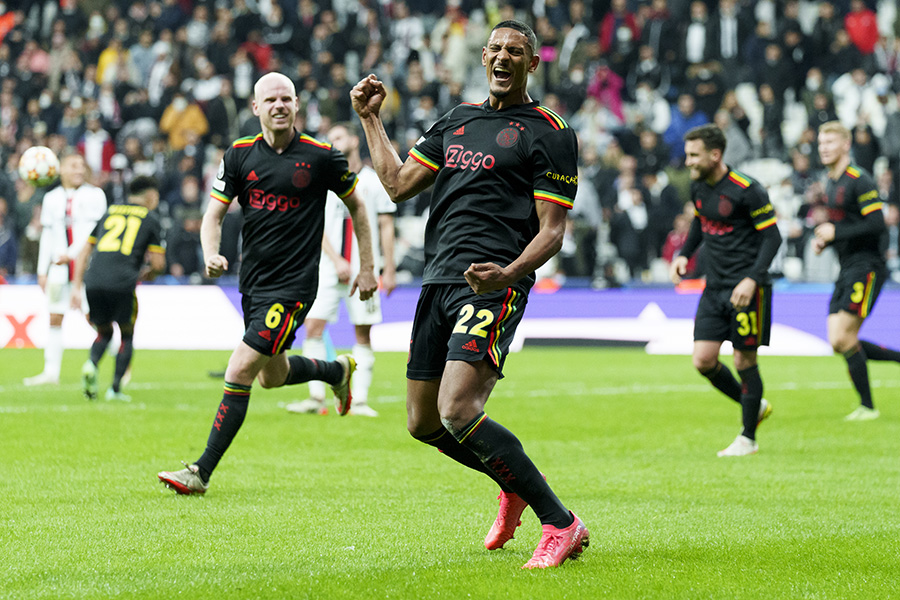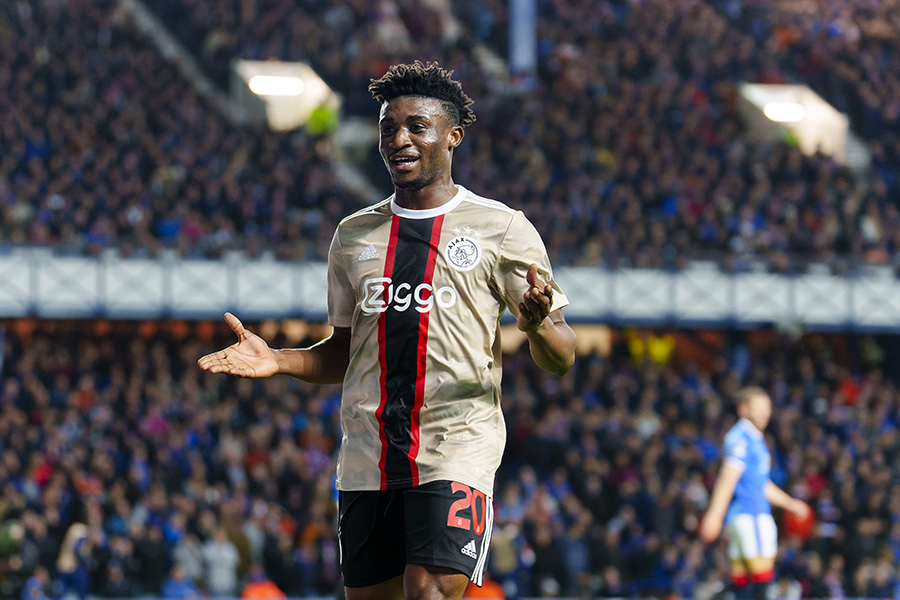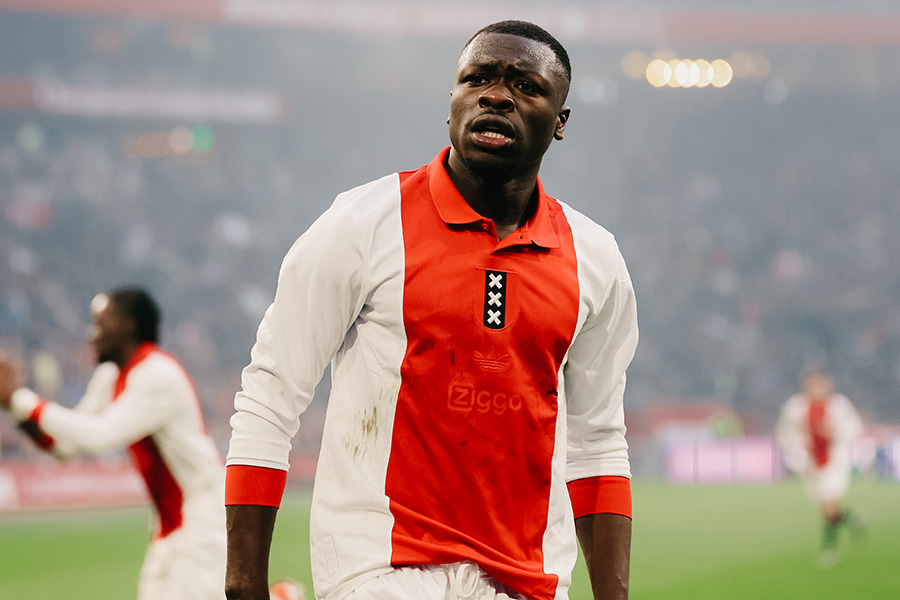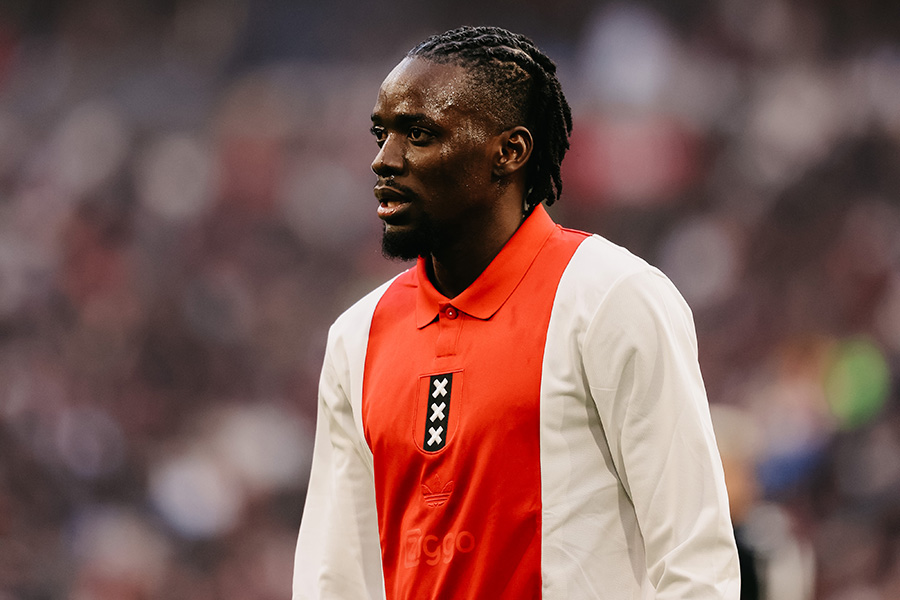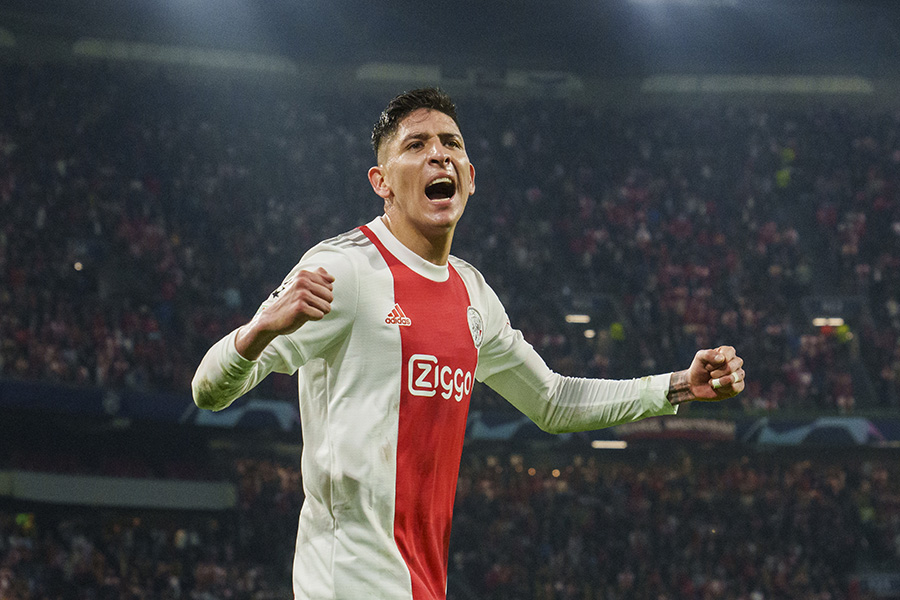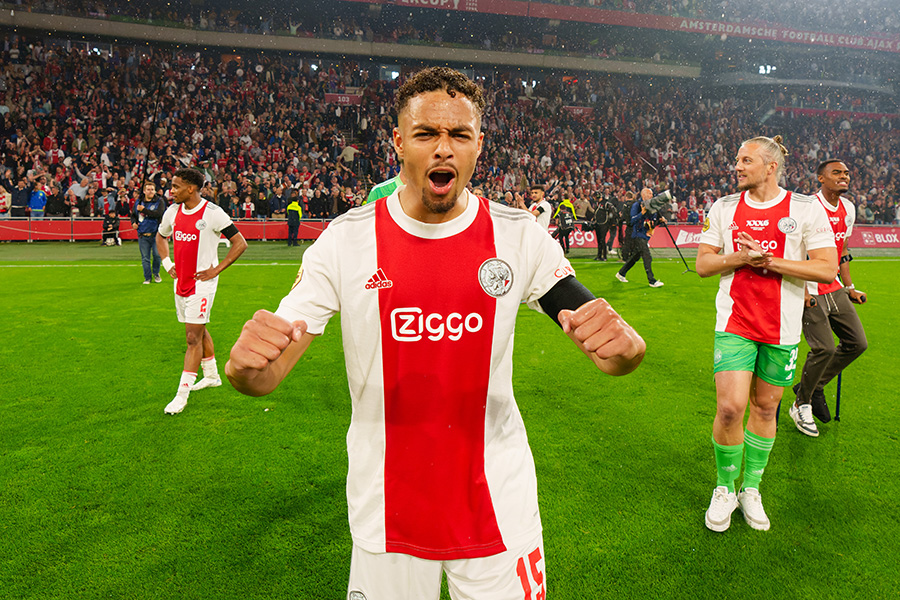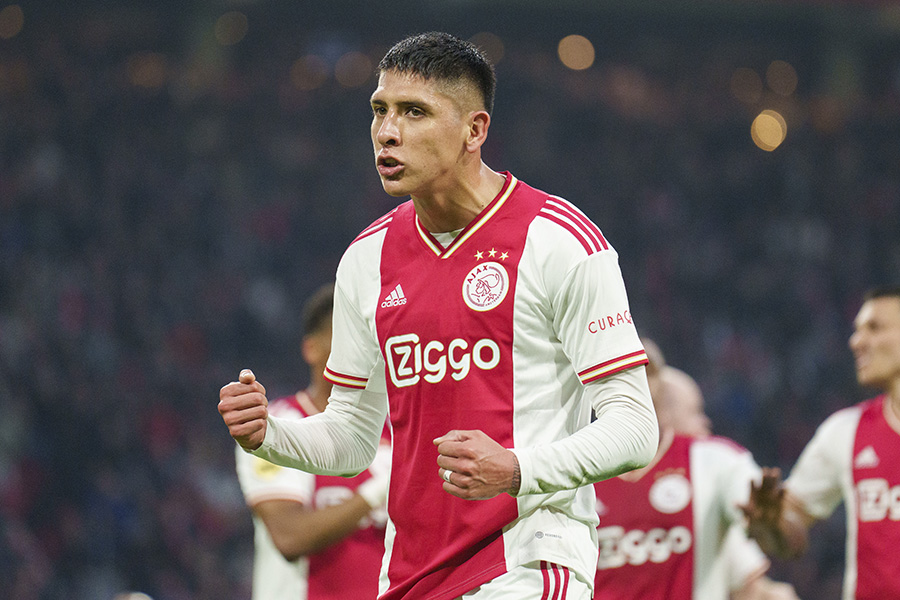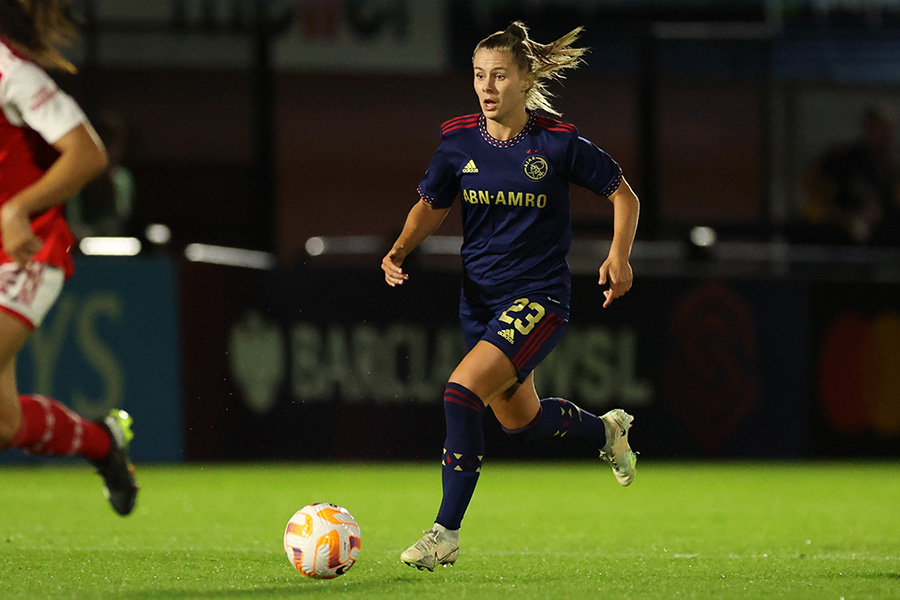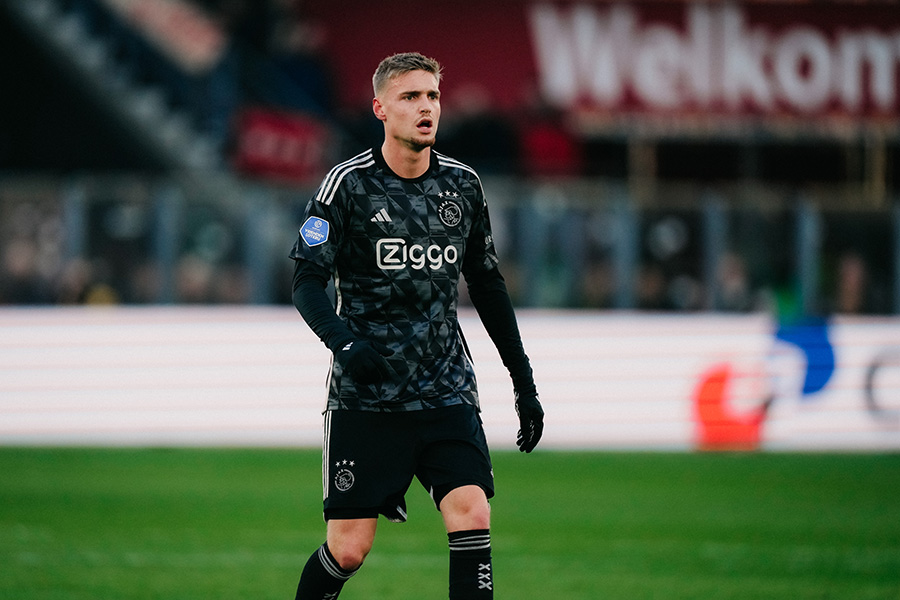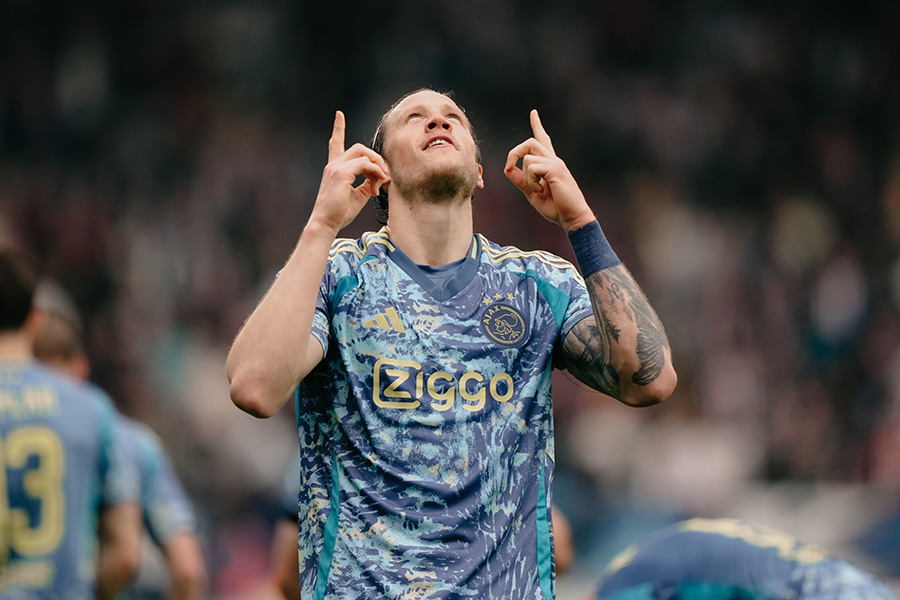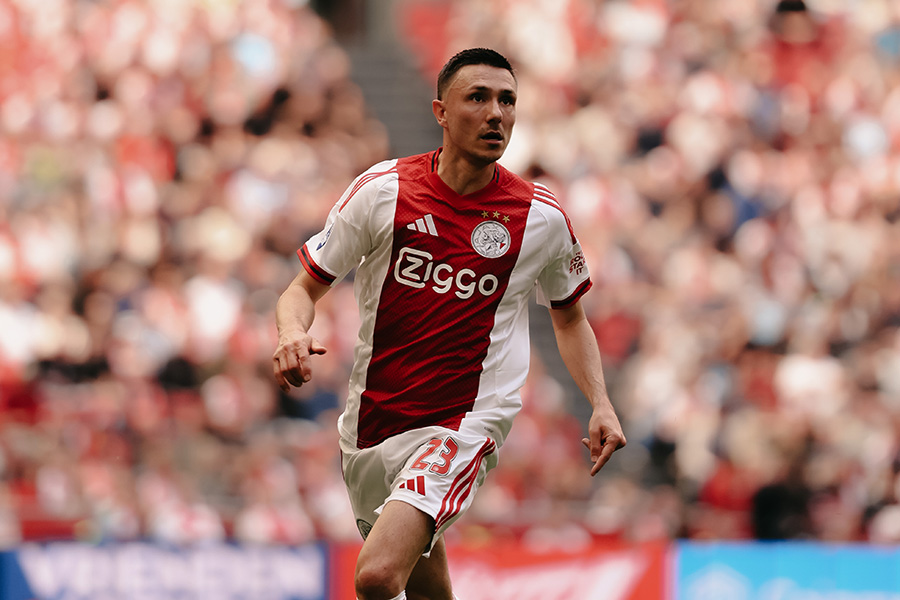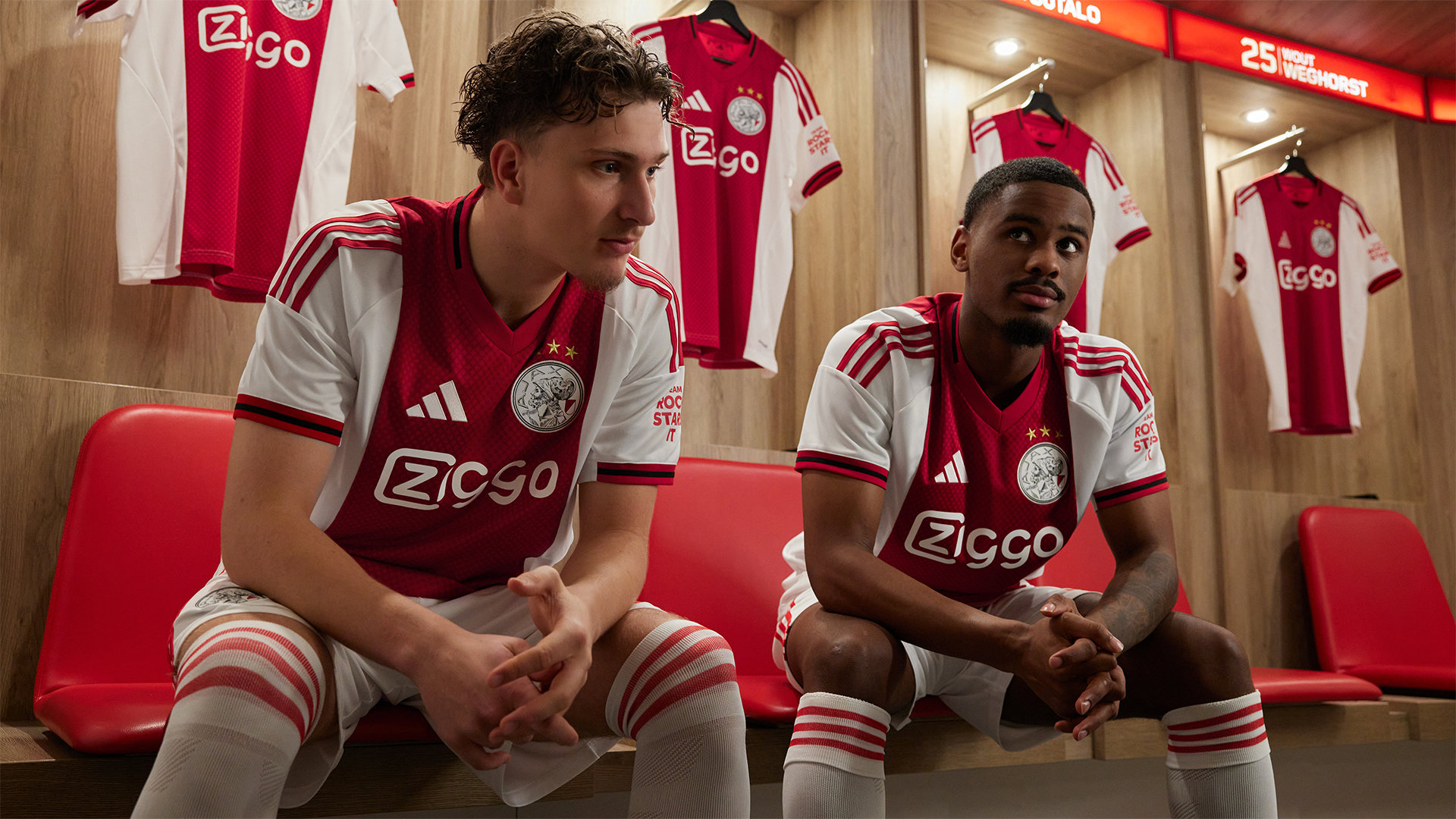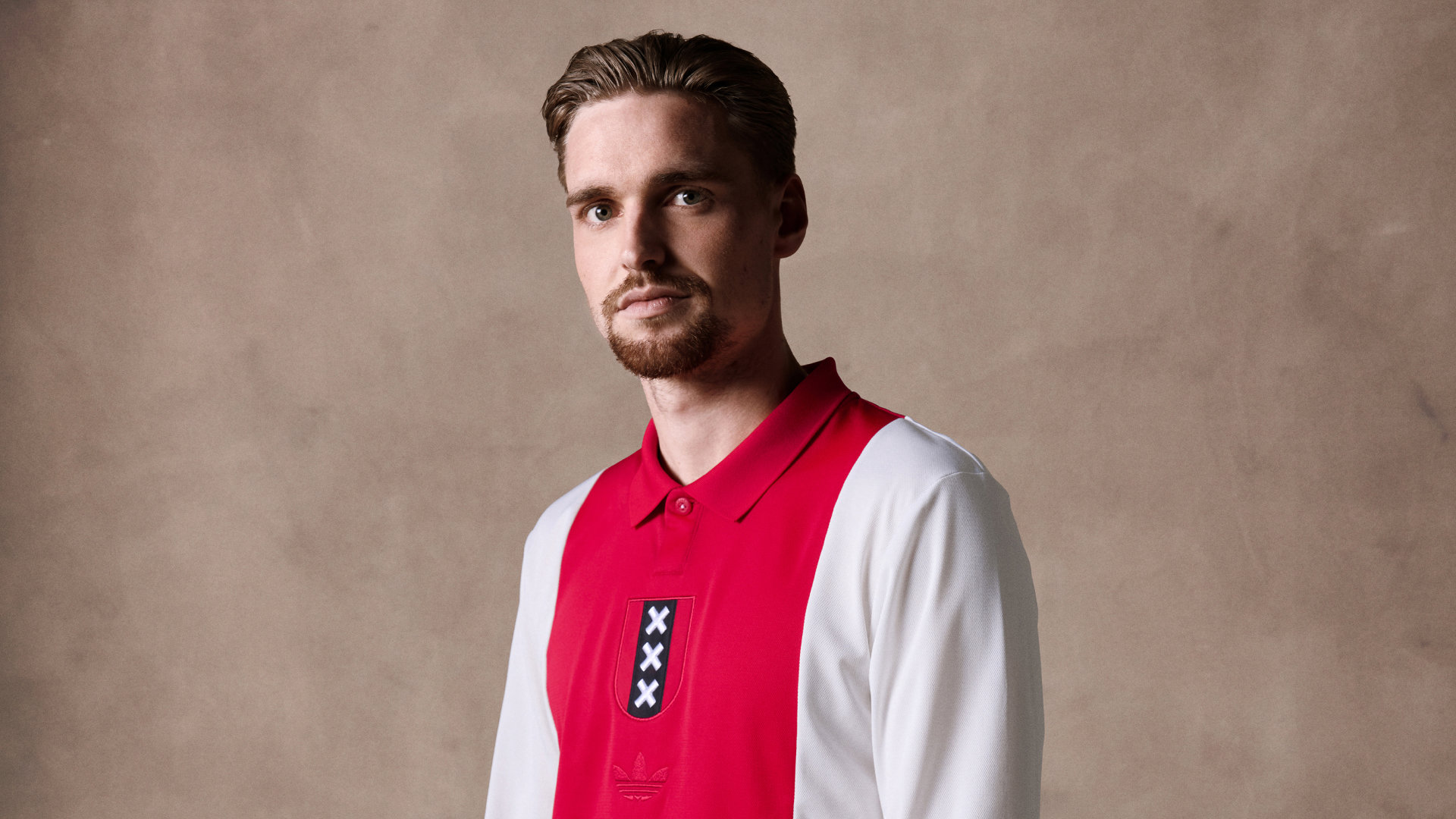We head to adidas's headquarters, just a stone's throw from the Johan Cruijff ArenA. The surroundings breathe sport, breathe football, and are subtly infused with an Ajax touch. Frank Basters, senior director of brand activations, speaks to us at length. "Great to have you here. Where shall we start?"
Back to 2000, back to the beginning. Ajax were with Umbro, and adidas were with Feyenoord. "We're an ambitious brand, and we want to be associated with the best in every sport. If you look at the Netherlands, that's Ajax. And of course, in sport, 'the best' is subjective. But Ajax were defined as the best, and that's why the decision was made at the time. And that’s what Ajax wanted too. If you look at football history, adidas is the football brand. We were then, and we still are. So the association between us makes sense."
Designing a shirt
Since adidas and Ajax began working together, more than fifty kits have been designed and presented. But how does that actually work? "We get that question a lot," he laughs. "In short, it's a two-year process. But if you look deeper, we're constantly working on it. Internally and with Ajax, we have near-daily discussions about the shirt. What we try to do together is build a library of ideas that’s relevant for the club and for the fans."
"The design is our responsibility, our designers handle that," Basters continues. "But to gather inspiration, we regularly have brainstorming sessions. Recently, various adidas colleagues from home and abroad were here. They were given a tour of Amsterdam and of Ajax. To see things and to draw inspiration. From buildings to museums, and from the canals to the bikes. A lot has come from that over the past years."
Back to the process. "We present the design to the club around eighteen months in advance. A small Ajax delegation is present. A decision is made, and then we produce samples. Then comes a training range, we test materials, and eventually, a kit is produced. But it's really not easy, you know."
Target audience
Basters takes a sip of his water and continues calmly. "We're all human, and humans have tastes. But it's not about our taste or what we think. It's about what a fan wants to buy in two years. You have to put yourself in the shoes of someone who's two years further along when they buy it. That isn't easy because you have to rely on trend watchers, on designers, and insights. We need to do things that appeal to the fan."
Additionally, the needs of the consumer, the fan, have undergone significant changes. According to Basters, football shirts have become a lifestyle. And that means adidas has had to adapt over the past years. "We used to have two shirts, both quite conservative. But now, the goal is to reach as wide a fan base as possible. The core audience of Ajax, to put it bluntly, is a seventeen-year-old consumer. But at a football club, the fan spectrum is enormous. From eighty-year-olds to tourists, from eight-year-olds to the hardcore supporters. And in the last 25 years, we've also seen enormous growth in the number of young girls and women wanting to wear our shirt."
Since 2020, Ajax and adidas have introduced a third kit every year. And not without reason. "Tastes among Ajax fans vary enormously. What we try to do with the three kits is cater to different target groups. The home shirt typically appeals to traditional fans, the away shirt is aimed at the younger crowd, and the third shirt is designed to be both trendy and wearable outside the stadium. We've pushed the limits a bit with those. That suits Ajax, that suits Amsterdam."
Conditions
"But," he says, as we prepare to move to a different topic, "The most important thing is: it has to feel good to play in. The players must be supported in their functional needs. Secondly, it has to fit Ajax. What you'll get is that not everyone likes everything, and we're fine with that. In our view, there's only one truth, and that’s how many shirts are sold. But one thing is connected to the other."
Basters understands that there may be criticism of a shirt. But he'd like to explain. "People shouldn't forget that UEFA imposes a lot of guidelines on us." The iconic white-red-white is a good example. "The home shirt is neither light nor dark, so finding a contrasting version is really difficult. You can use alternative shorts or socks, but Ajax won't do that either. Because the kit is iconic and shouldn't be tampered with too much. There’s also been discussion around the three adidas stripes on the shirt. For us, it was pretty simple: if you choose adidas, you also choose the stripes. They stand for quality and football."
"Ajax's home kit is very strict," he continues lovingly about the shirt. "Stricter than at any other club in the world, and there are clear agreements about that. But that's not always easy, because if you deliver the exact same thing every year, your commercial result drops. So we vary with a collar, round neck, etc. But Ajax have said: let's seek innovation and renewal in the second and third kits. That's where there’s room for storytelling."
Stories behind the kit
That storytelling is clearly visible. And how. In summer 2021, adidas and Ajax, together with Bob Marley's family, released an iconic third kit. "The fans sang that song every second half, and we wanted to do something with that. The design was fantastic, and the Marley family loved it too." A black kit, with red, yellow and green details. An ode to Bob and to reggae culture. "Everything came together in that shirt."
You can hear in Basters' tone that he's passionate about Ajax shirts, that he loves the club, and pours his heart and soul into the designs. "Ajax has been a frontrunner in storytelling with kits. You see that now at every club. The Bob Marley shirt is the prime example, even internationally. That kit may have been a breakthrough in football, and it was made possible with Ajax. That's also down to Amsterdam, a city with guts. It's no coincidence that a few years after the Bob Marley shirt and the Daily Paper shirt, Manchester United and Arsenal also launched something similar. That's something we can all be very proud of."
Daily Paper opens eyes
A year after the Marley shirt, the Daily Paper shirt was launched. A sparkle appears in Basters his eyes. "You know," he begins quietly. "That might be an even more beautiful story. We reached out to Daily Paper with the idea of doing something together, and they'd already had that idea for years. We gave them carte blanche—within the boundaries of an Ajax football shirt, of course."
"They came with two storylines: the football pitches of Amsterdam and the Pan-African colours. And while those storylines seem obvious now, we'd never have come up with them ourselves," he laughs. "We've always underestimated what a stadium in the Bijlmer means to a neighbourhood like the Bijlmer, and how deeply rooted Ajax is there. And I also think we've underestimated how inaccessible football can be to parts of the community. Daily Paper gave us some really beautiful insights, and we’re very grateful to them for that."
Most beautiful kit
Then the burning question. After nearly 25 years at adidas, which shirt does Basters consider the most beautiful? "What a question," he laughs. "You know, I have to go with the recent anniversary shirt. A shirt without a logo, just after announcing the return of the classic logo. Plus, a tribute to Amsterdam. So classic, so clean."
"Speaking of the classic logo," he quickly continues, "the definitive comeback really came from Ajax. Many teams go for the modern, the trendy. But for Ajax to be willing, in today's world, to swim against the tide. That's something we at adidas find incredibly inspiring."
Gratitude
The partnership between Ajax and adidas is currently the longest-running one in the Netherlands between a kit sponsor and a football club. "Our partnership is about true collaboration. We are partners in good times and bad. We know what we have in each other, and yes, we've had our share of problems. But we've always come through them, together."
"We support Ajax in every possible way, and we're always there," Basters continues. "And Ajax? In many ways, Ajax fits us like a glove. The city, the youth academy, and the core values. It's clear, open, honest, and transparent. Good is good, bad is bad. The relationship is very strong, because we are embedded throughout the organisation. And that feels really good. That dynamic collaboration has been on an upward trajectory for years."
Without even looking at the time, the conversation continues to flow smoothly. Basters remains passionately enthusiastic, and the corners of his mouth curl upwards when the topic turns to ambitions. And that's where both parties want to go: upward. "Together, we've made great strides internationally. You see the Ajax shirt all over the world: in Bali, in New York, in Vietnam, that's wonderful. But to win an international trophy together, that would be the ultimate."
The future
To conclude. What can Ajax fans expect in the coming years? The current deal runs until 2031. "We'll continue to deliver with Ajax, continue to surprise in kit design, and continue to push boundaries. And will everything be a success? No. But if you always play it safe, you'll never have success. There are still some truly beautiful things in the pipeline. Adidas is Ajax, we are here for Ajax, and as far as I'm concerned, we always will be. We'll always be there for the club," he concludes with beautiful words.
